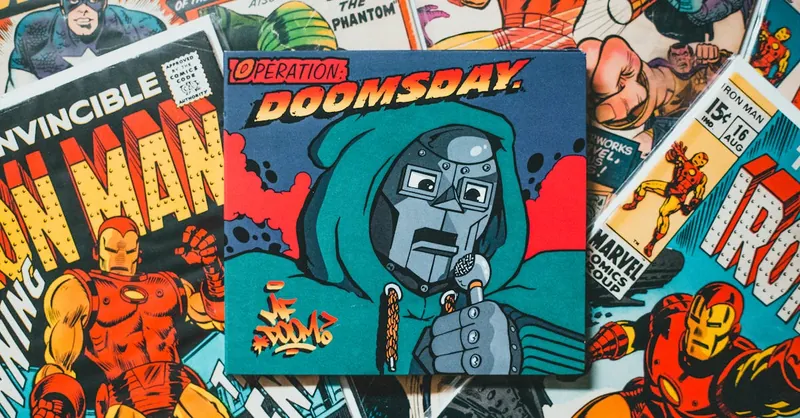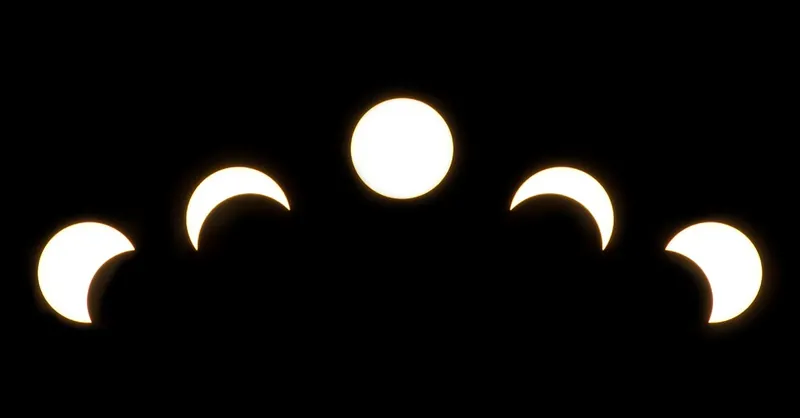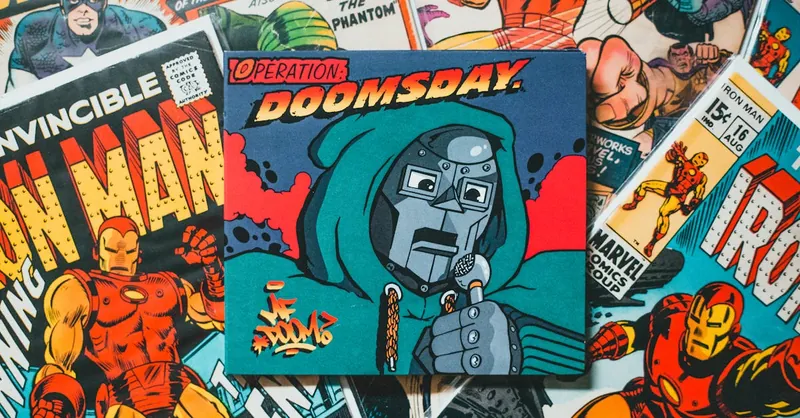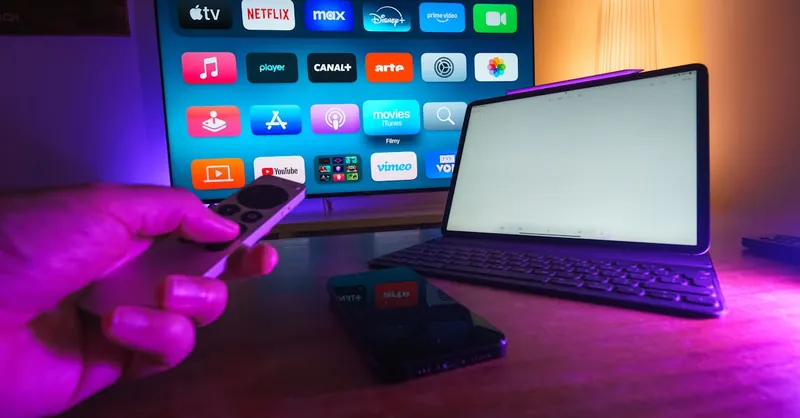How to Watch Marvel Movies in Order: A Simple Guide for New Fans
Category: Marvel
Your Easy Guide to Watching Marvel Movies in Order
If you're new to the Marvel Universe or just a casual fan trying to figure out where to start, you might find the sprawling Marvel Cinematic Universe (MCU) a bit overwhelming. With dozens of movies spanning over a decade, it’s tricky to know which film to watch first, whether you should follow release dates or story chronology, and even how to best enjoy these characters and stories without feeling lost. This guide is crafted just for you — casual viewers and newcomers seeking a clear, simple way to dive in without the confusion or spoilers.
Unlike deep-dive fan sites packed with jargon and excessive detail, this blog breaks down the Marvel movies into easy-to-understand, standalone narratives, making the movie-watching journey as fun and straightforward as possible. We’ll explore the best orders to watch the films, explain why those orders matter, and highlight key characters and storylines to watch out for. Whether you want the classic release order, the chronological timeline, or just want to watch the most important films for your first go, you’ll find it here. Read on to start your Marvel adventure confidently and enjoyably, without needing to be a longtime fan or comic book expert.
- Your Easy Guide to Watching Marvel Movies in Order
- Understanding the Marvel Cinematic Universe: What Is the MCU and Why Order Matters
- Release Order: The Classic Way to Watch Marvel Movies
- Chronological Order: Watching Marvel Movies According to Story Timeline
- Phase-by-Phase Breakdown: Navigating the MCU in Story Arcs
- Must-Watch Marvel Movies for Newcomers: Key Titles to Start With
- How to Watch Marvel TV Shows and Specials Alongside the Movies
- Where to Stream Marvel Movies: Platforms and Accessibility
- Tips for Enjoying Marvel Movies Without Confusion or Spoilers
Understanding the Marvel Cinematic Universe: What Is the MCU and Why Order Matters
The Marvel Cinematic Universe (MCU) is a vast, interconnected world of superheroes, villains, and epic stories told through movies and TV shows produced by Marvel Studios. Since the release of Iron Man in 2008, the MCU has expanded into a massive franchise consisting of over 30 films divided into distinct Phases—each phase representing a chapter in an overarching narrative. This interconnectedness means that characters, events, and storylines build upon each other, making how you watch the movies important for fully appreciating the experience.
The MCU is typically grouped into three major phases (and now a fourth underway), each introducing new heroes, expanding existing stories, and culminating in big crossover events like The Avengers films. Watching the movies in release order closely follows how audiences originally experienced the unfolding Marvel saga, while chronological order organizes the story by the timeline of events within the universe itself. Choosing the right watch order helps maintain story continuity, avoid spoilers, and enhances understanding of character development and plot twists. For casual fans, grasping the MCU’s scope and why order matters transforms what might seem like a complex tangle of films into a clear, enjoyable journey through one of the most successful cinematic universes ever created.

Image courtesy of Erik Mclean
Release Order: The Classic Way to Watch Marvel Movies
One of the most popular and straightforward ways to enjoy the Marvel Cinematic Universe is by watching the movies in their theatrical release order. This means starting with Iron Man (2008), followed by each film as it originally premiered in theaters. Watching in release order allows you to experience the MCU just as audiences did when the franchise first launched and gradually expanded into the superhero powerhouse it is today.
Why Choose Release Order?
- Experience the story’s natural progression: Release order reflects how Marvel Studios intended the narrative to unfold. You’ll see characters introduced and developed over time, understand plot twists as they were revealed, and appreciate how each movie builds on the last.
- Catch cultural moments and fan reactions: Watching along the original timeline lets you connect with the excitement and buzz that surrounded each movie’s debut, from the surprise post-credits scenes to evolving story arcs.
- Simplifies watching for casual viewers: Rather than juggling complex timelines or backstory, release order offers a clear, intuitive path through the MCU, perfect for newcomers and those who want to enjoy the movies without extra confusion.
Quick Release Order Highlights:
- Start with Iron Man (2008), the movie that launched the MCU.
- Follow major Phase 1 films like The Incredible Hulk and Thor to meet core heroes.
- Move into the epic Avengers crossover films, which mark key turning points.
- Continue through Phase 2 and Phase 3, unfolding new stories and introducing fan-favorite characters like Guardians of the Galaxy and Black Panther.
By following this classic watch order, you’ll naturally witness Marvel’s storytelling evolution and character growth, making your MCU journey both enjoyable and easy to follow.

Image courtesy of 𝗛&𝗖𝗢
Chronological Order: Watching Marvel Movies According to Story Timeline
For viewers who want to experience the Marvel Cinematic Universe (MCU) based on the actual timeline of events within the story world, watching the movies in chronological order is an appealing alternative. This approach arranges MCU films according to when their stories take place in-universe—from the earliest events to the latest—rather than by their release dates. For example, you’d start with Captain America: The First Avenger, which is set during World War II, and then proceed through movies like Iron Man, The Avengers, and beyond, following the timeline of key events and character arcs as they unfold.
Advantages of Watching Marvel Movies Chronologically
- Clear story progression by timeline: Viewing movies this way helps you understand the cause-and-effect relationship of events as they happen in the MCU world, giving a fresh perspective on character motivations and plot developments.
- Deeper immersion in character backstories: Since some films include flashbacks or origin stories, this order highlights characters’ histories in a natural sequence, making character growth more intuitive.
- Avoids spoilers from future movies: Chronological viewing can help casual fans discover story twists and important reveals without accidentally jumping ahead and spoiling later films.
Disadvantages to Consider
- Confusing viewing experience: Because the MCU was designed to be experienced in release order, some storytelling choices—like post-credits scenes or cross-movie references—may feel out of place or less impactful when watched strictly by timeline.
- Jumps in tone and style: Early MCU films have a distinct vibe compared to later ones, and chronological order shuffles these shifts in tone, pacing, and visual effects, which can affect overall enjoyment.
- Complex timeline details: The MCU timeline includes overlapping events, time travel, and multiverse elements introduced in recent movies and TV shows, making a perfectly seamless chronological order tricky to follow.
Chronological Viewing Starter List
To get you started, here’s a simplified version of the MCU’s main chronological order:
- Captain America: The First Avenger (WWII timeline)
- Captain Marvel (1990s)
- Iron Man
- Iron Man 2
- The Incredible Hulk
- Thor
- The Avengers
- Iron Man 3
- Thor: The Dark World
- Captain America: The Winter Soldier
- Guardians of the Galaxy
- Guardians of the Galaxy Vol. 2
- Avengers: Age of Ultron
- Ant-Man
- Captain America: Civil War
- Black Panther
- Spider-Man: Homecoming
- Doctor Strange
- Thor: Ragnarok
- Ant-Man and The Wasp
- Avengers: Infinity War
- Avengers: Endgame
- Spider-Man: Far From Home
- (And onwards with Phase 4 titles…)
Choosing the chronological order is ideal for fans who want a story-focused experience grounded in the MCU’s internal timeline and are okay navigating some complexities. For casual viewers, it offers a fresh way to appreciate Marvel heroes’ journeys while uncovering connections that might be less obvious in release order.

Image courtesy of Vidal Balielo Jr.
Phase-by-Phase Breakdown: Navigating the MCU in Story Arcs
One of the most effective ways to watch Marvel movies is by following the MCU’s distinct Phases, each representing a collection of films that together tell a focused story arc or introduce major character developments. The MCU’s Phases are designed to build upon one another, with clear thematic progression and evolving stakes. Watching movies grouped by phase helps casual fans and newcomers grasp the larger narrative without feeling lost in the complexity of the entire franchise.
Why Watch by MCU Phases?
- Clarifies overarching storylines: Each phase has a unique narrative focus—from the origins and team-building of Phase 1, to the expansion into cosmic adventures in Phases 2 and 3, and the introduction of multiverse concepts and new heroes in Phase 4 and beyond.
- Shows character growth and relationships naturally: Following movies by phase highlights how characters develop within a set context—like Tony Stark’s journey throughout Phase 1 and 2 or the emergence of new leads like Shang-Chi and the Eternals in Phase 4.
- Easier to follow complex stories: Since each phase ends with major crossover events (e.g., The Avengers, Infinity War, Endgame), watching phase-by-phase helps viewers experience these milestones as intended, enhancing understanding and engagement.
Overview of MCU Phases
- Phase 1 (2008-2012): Lays the groundwork with individual origin stories of key heroes such as Iron Man, Thor, Captain America, and culminates in the formation of the Avengers team.
- Phase 2 (2013-2015): Explores the consequences of the Avengers’ actions, introduces new characters like the Guardians of the Galaxy, delves into the cosmic side of the MCU, and sets up bigger conflicts.
- Phase 3 (2016-2019): The MCU expands dramatically, focusing on character-driven stories (Black Panther, Spider-Man: Homecoming), internal conflicts (Civil War), and leads to the massive climax against Thanos in Infinity War and Endgame.
- Phase 4 and Beyond (2021+): Introduces fresh heroes and concepts like the multiverse, magic, and new team dynamics, with movies and TV shows broadening the scope of the MCU’s storytelling landscape.
By watching Marvel films phase-by-phase, casual fans gain a clear sense of narrative structure and can enjoy the MCU as a series of connected stories that build on each other, making the complex universe both accessible and rewarding.

Image courtesy of Sebastian Voortman
Must-Watch Marvel Movies for Newcomers: Key Titles to Start With
If you're new to the Marvel Cinematic Universe and want a strong, enjoyable introduction without committing to every single film, focusing on a selection of must-watch Marvel movies is a great way to start. These key titles introduce the main characters, establish major storylines, and set the foundation for the Marvel saga, making them perfect for casual fans who want a clear, straightforward entry point into the MCU.
Essential MCU Movies Every Newcomer Should Watch
-
Iron Man (2008)
The movie that launched it all. Iron Man introduces Tony Stark, a billionaire genius who becomes the heroic Iron Man. This film sets the tone for the entire MCU, combining sharp humor, exciting action, and the seeds of the larger Marvel world. -
Captain America: The First Avenger (2011)
This film tells the origin story of Steve Rogers, the super-soldier who becomes Captain America during World War II. It introduces important themes like heroism and sacrifice while setting up events that echo throughout the MCU. -
Thor (2011)
Aside from bringing the powerful Norse god to Earth, Thor expands the MCU into cosmic territory and explores family dynamics that are critical in later films. It’s a key character-driven story that balances mythology with humor. -
The Avengers (2012)
The first major team-up film, The Avengers brings together Iron Man, Captain America, Thor, Hulk, Black Widow, and Hawkeye to fight a global threat. Watching this movie provides a satisfying payoff to the earlier origin stories and establishes the interconnected nature of the MCU. -
Guardians of the Galaxy (2014)
Introducing a new group of heroes from outer space, this movie adds humor, heart, and a fresh cosmic perspective. It’s essential for understanding the MCU’s expansion beyond Earth-centric stories. -
Captain America: Civil War (2016)
Sometimes described as a “mini Avengers movie,” Civil War dives deep into complicated relationships and conflicting ideals among heroes. It’s pivotal for character development and sets the stage for future conflicts. -
Black Panther (2018)
A cultural milestone, this film not only introduces the vibrant world of Wakanda but also explores identity, leadership, and legacy. Its impact extends beyond the MCU, making it a must-watch for any fan. -
Avengers: Infinity War (2018) & Avengers: Endgame (2019)
These two epic films form the climactic conclusion of the MCU’s first major saga. Watching them provides closure to many character arcs and delivers some of the most thrilling and emotional moments in Marvel history.
Why These Titles Matter for Casual Fans
- Core Characters and Storylines: These movies introduce you to the most famous Marvel heroes and villains, so you won’t feel left behind as the franchise grows.
- Engaging Yet Accessible: Each film works as a strong story on its own while connecting to a larger picture, making them easy for newcomers to follow.
- Highlights MCU’s Strengths: From humor and heart to epic battles and world-building, these titles showcase the variety and excitement that define Marvel movies.
By starting with these must-watch MCU movies, casual fans can enjoy a rich, compelling Marvel experience without overwhelming themselves. This approach balances depth and simplicity, helping you appreciate key characters and events while leaving room to explore more titles as your interest grows.

Image courtesy of Erik Mclean
How to Watch Marvel TV Shows and Specials Alongside the Movies
With the Marvel Cinematic Universe expanding beyond the big screen, Marvel TV shows and specials on Disney+ have become essential parts of the MCU story. Series like WandaVision, The Falcon and the Winter Soldier, and Loki not only develop key characters but also introduce new plotlines that tie directly into upcoming movies. For casual fans and newcomers, incorporating these shows into your Marvel viewing order enhances your understanding of the universe without overwhelming you.
Where the Disney+ Marvel Series Fit In
Most of the current Marvel TV shows take place after the events of Avengers: Endgame and explore the consequences of that massive conclusion. For example:
- WandaVision dives into Wanda Maximoff’s personal story and her mysterious powers.
- The Falcon and the Winter Soldier focuses on Sam Wilson and Bucky Barnes as they navigate a changed world and legacy.
- Loki follows the god of mischief’s adventures through time and alternate realities, setting up major multiverse concepts.
Suggested Viewing Integration
For the smoothest experience, it's easiest to watch these shows in release order alongside the movies, especially after finishing Phase 3 and watching Avengers: Endgame. A practical way to fit these TV series into your Marvel journey is:
- Complete up to Avengers: Endgame and Spider-Man: Far From Home.
- Then watch WandaVision to explore Wanda’s story.
- Follow with The Falcon and the Winter Soldier for next-step character development.
- Watch Loki before diving into Phase 4 films and specials, as it introduces the multiverse themes crucial to upcoming storylines.
Why Include Marvel TV Shows?
- Expand character depth: The shows provide personal stories and motivations that aren’t fully explored in movies.
- Understand new plot threads: Many TV series pave the way for events in Phase 4 and beyond, connecting directly to new Marvel movies like Doctor Strange in the Multiverse of Madness and Ant-Man and the Wasp: Quantumania.
- Enjoy more immersive storytelling: Marvel TV specials and series add layers to the universe without requiring deep comic knowledge, making them perfect for casual fans who want richer context.
By blending these Disney+ Marvel TV shows with your movie viewing, you’ll get a more complete and enjoyable Marvel experience—one that keeps pace with the latest MCU storytelling developments without feeling like a chore or an overload of information.

Image courtesy of Allan Rodrigo
Where to Stream Marvel Movies: Platforms and Accessibility
Finding the best place to watch Marvel movies legally and conveniently is key for casual fans and newcomers eager to start their MCU journey without hassle. Disney+ stands out as the primary streaming platform for the Marvel Cinematic Universe, offering an extensive library of MCU films and Marvel TV series all in one place. Since Disney owns Marvel Studios, nearly every Marvel movie—from Iron Man through the most recent Phase 4 releases—is available to stream on Disney+ in most regions, making it the go-to hub for binge-watching Marvel content in high quality with subtitles and multiple language options.
Other Streaming and Purchase Options
While Disney+ is the most comprehensive option, Marvel movies are also available across various other platforms depending on your location and subscription preferences:
-
Digital Purchase or Rental
Services like Amazon Prime Video, Apple iTunes, Google Play Movies, and Vudu allow you to buy or rent individual Marvel films. This is ideal if you prefer owning specific titles or don’t want to subscribe to a streaming service. You’ll also find newer releases often come to these platforms shortly after their streaming debut. -
Cable and Satellite On-Demand
Many cable providers offer Marvel movies on demand. This option typically requires a cable subscription but allows for convenient viewing without an additional streaming service. -
Other Streaming Services
Occasionally, Marvel movies may appear on platforms like Netflix or Hulu in certain countries due to licensing deals. However, these licenses are often temporary and fragmented, so availability varies widely and is less reliable compared to Disney+.
Accessibility Tips for Smooth Marvel Viewing
- Check regional availability: If Disney+ is unavailable or limited where you live, be sure to explore legal digital marketplaces for purchase options.
- Look for bundle deals: Some digital platforms offer MCU movie bundles that can save money if you plan to watch multiple films.
- Use high-speed internet: Streaming high-quality Marvel movies requires a stable and fast internet connection for the best viewing experience.
- Consider device compatibility: Disney+ and most major platforms support streaming on smart TVs, phones, tablets, and gaming consoles, making it easy to watch Marvel movies wherever you are.
By streaming Marvel movies primarily on Disney+ or purchasing digital copies through trusted platforms, you ensure a legal, accessible, and seamless way to enjoy the MCU’s vast storytelling without missing any key films or new releases. This convenience helps casual fans focus on the epic stories and beloved characters, rather than worrying about where to find the movies.

Image courtesy of Jakub Zerdzicki
Tips for Enjoying Marvel Movies Without Confusion or Spoilers
Diving into the Marvel Cinematic Universe can be thrilling but also a little overwhelming, especially for newcomers who want to enjoy the movies without getting lost in complicated backstories or accidentally spoiling major plot points. Here are some best practices to help casual fans watch Marvel movies with maximum enjoyment and minimum confusion:
Avoid Spoilers and Protect Your Viewing Experience
- Stay clear of online spoilers and fan theories until you finish the key movies or phases you plan to watch. Social media and fan forums often discuss major twists and reveals—avoiding these ensures your experience stays fresh and exciting.
- Skip detailed plot summaries or spoilers from later movies that reference events you haven’t seen yet. This keeps surprises intact and heightens emotional impact when big moments happen on screen.
Focus on Standalone Enjoyment
- Marvel movies generally work well as standalone stories, so if you’re unsure about every cameo or subplot, don't worry! You can enjoy each film on its own merits—action, humor, and character development—without needing to chase every reference or Easter egg.
- If certain cameos or post-credits scenes feel confusing or spoil future films, it’s perfectly fine to skip those without losing the main story.
- Concentrate on characters and themes that resonate with you. Whether you prefer Tony Stark’s wit, Captain America’s heroism, or cosmic adventures with the Guardians, focusing on your favorite aspects makes the experience more personal and enjoyable.
Take Your Time and Choose Your Path
- There is no “wrong” way to watch Marvel movies. Whether you follow release order, chronological order, or select must-watch titles, let your interest guide you. It’s more important to enjoy the journey than to complete it perfectly.
- Feel free to pause between movies or phases to reflect on story arcs and characters—this helps avoid burnout and keeps the MCU fun and immersive rather than overwhelming.
By using these tips to manage spoilers, simplify viewing, and focus on what you enjoy most, newcomers can confidently explore the Marvel Cinematic Universe without confusion or pressure. This approach keeps your Marvel adventure fresh, exciting, and fully entertaining from start to finish.

Image courtesy of cottonbro studio
